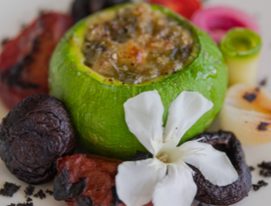Master of Wine and one of the leading wine writers in the world, Tim Atkin has visited Argentina regularly since 1992. His Argentina Special Report has become a guide to the standing of Argentine wines in global opinion and so, a few days after his 2020 report – for which Tim Atkin visited the country just before the Covid-19 quarantine – the English writer spoke to WOFA about the state of play in Argentine viticulture, how international consumers see our wine and the potential impact of the pandemic on the industry.
How are Argentinian wines seen these days outside of Argentina? How much do consumers know about wines from Argentina?
I think Argentinian wines have a good image outside Argentina, although I can only really speak with a degree of knowledge about the UK market. They are never regarded as the cheapest – which I think is a good thing – but people consider them good value for money and of consistent quality. A lot of this is down to Malbec, which dominates our market, as it does elsewhere. Argentina has become almost synonymous with the grape, which is a positive thing in some respects. The next stage is to tell people about different regional and sub-regional styles of Malbec. And, of course, about other wines. After all, Malbec only represents 22% of the country’s area under vine. That’s where consumers’ impressions of Argentina are largely out of date. They don’t know about the quality of the whites, the red blends, the Cabernet Francs and a host of other things. That should be the next stage – to introduce people to the true diversity of Argentina.
How likely is it that Argentina will break into the fine wine market?
I think that Argentina has established itself in the fine wine market with a handful of top Malbec brands, but also with Bordeaux-style blends that often include Malbec as well as other varieties, most notably Cabernet Sauvignon and Cabernet Franc, as well as Petit Verdot and Malbec. At the very top level, it’s as much about branding and history (or track record), which is why wines like Cheval des Andes and Caro have done well in Argentina, having that link with Bordeaux. Some of the top whites have also achieved good prices on the back of critical success, but others probably need more time to build their reputations. The quality is definitely there; it just needs more people to taste the wines and compare them with other top-level examples.

What surprised you about your recent visit?
That Semillón is being taken more and more seriously as a variety. I also enjoyed seeing the emphasis being placed on colder areas such as Chubut, Chapadmalal, El Espinillo, La Carrera, Las Pareditas and Uspallata. These regions are bringing an extra dimension to the Argentinian wine scene. Finally, I think that Luján de Cuyo, especially Vistalba and Las Compuertas, is once again getting the recognition it deserves.
What new trends did you notice in the wines you tasted?
I found that more and more Argentine winemakers are taking greater care with oak ageing and harvesting earlier to place the emphasis on freshness and balance in their wines. We’re also seeing fewer heavy bottles which is good in a world that needs to be aware of its carbon footprint. Finally, terroir is taking presence over winemaking technique, people are letting the vineyards speak for themselves.
Why did you choose David Bonomi as your winemaker of the year?
I chose David for what he has achieved in less than a decade with Edy del Pópolo at Per Se, a Grand Cru area that is producing some of the best reds in Argentina, but also for his work at Bodega Norton, where he produces very different wines in far greater volumes that demonstrate the precision and sensitivity of his talent.
Which wines would you recommend to someone who has never tried Argentine wine before?
Start with Malbec, as it’s such an important part of the Argentinian wine scene, but try a few different styles. Then try a Torrontés, as it’s part of the history of the country. Then try a Bonarda and a Criolla Chica. Then it would be time for a white blend, or a Chardonnay, then some red blends. Once you’ve got an idea of the basics, try to compare and contrast wines from different regions. Argentina’s image is one of ‘desert viticulture’, but its landscape and climate is actually very varied. Within Mendoza alone, you find areas that are as hot as Jerez in Andalusia and as cool as Champagne. But the best advice I can give you is to go there. Argentina is a very welcoming place. Going there and looking at vineyards is the best way to understand its wines.
How Covid-19 is affecting wine consumption? Is it increasing in Europe and the USA during the lockdown?
I think it’s still too early to say. My guess is that people are drinking more wine (and alcohol in general) and probably eating more too. But with restaurants and bars closed, overall volumes are probably down. This is a tough time for everyone. I’m certainly looking forward to the chance to travel again, not to mention going to a few restaurants. Let’s just hope they’re still there by the time this is over.
Does the situation offer any opportunities for Argentinian wine exports?
Who knows. I think that it’s quite likely that Argentina will benefit from Brexit, if it still happens.
How will Brexit benefit Argentina?
Because there’ll be less trade with Europe and more elsewhere. But Brexit is as unpredictable as Covid-19… Let’s hope they find a vaccine for both!



